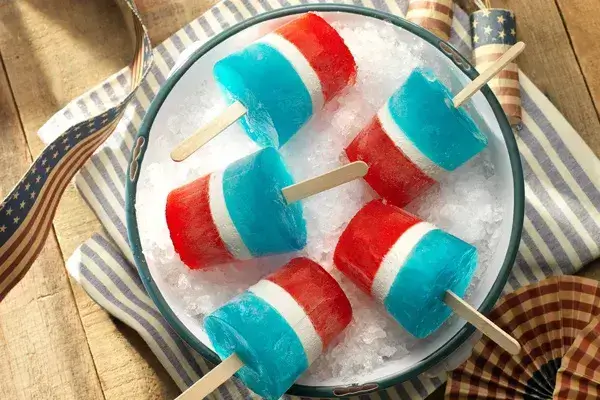Introduction
Brilliant Blue FCF, also known as FD&C Blue No. 1, is a synthetic dye used widely in the food and beverage industry. Known for its vibrant blue hue, it plays a crucial role in making food visually appealing. This blog explores the properties, applications, regulatory aspects, health considerations, and market trends of Brilliant Blue FCF.
What is Brilliant Blue FCF?
Brilliant Blue FCF is a synthetic dye, chemically known as disodium [4-[N-ethyl-3-sulfonatobenzyl]amino]-2-sulfonatophenyl]-[2-sulfonatophenyl]diazenyl]benzoate. Approved by regulatory authorities like the FDA and the European Food Safety Authority (EFSA), it is one of the most commonly used food colorants worldwide. It is valued for its bright, consistent blue color and its ability to remain stable under various conditions.
Properties of Brilliant Blue FCF
1. Color and Stability:
Brilliant Blue FCF provides a vivid blue color that is stable under light, heat, and varying pH levels, making it suitable for a wide range of food products.
2. Solubility:
It is highly soluble in water, which allows for easy incorporation into liquid and semi-liquid food and beverages.
3. Versatility:
The dye blends well with other colors, enabling the creation of a broad spectrum of shades for various applications.
Applications of Brilliant Blue FCF
Brilliant Blue FCF is used in numerous food and beverage products, enhancing their visual appeal:
1. Beverages:
Soft drinks, energy drinks, and flavored waters often contain Brilliant Blue FCF to achieve appealing blue tones.
2. Confectionery:
Candies, gums, and jellies use this dye to create bright blue hues that attract consumers.
3. Dairy Products:
Ice creams, yogurts, and milkshakes benefit from the vibrant color provided by Brilliant Blue FCF.
4.Bakery Products:
Frostings, icings, and baked goods utilize this dye to achieve eye-catching blue decorations.
5. Processed Foods:
Snacks, cereals, and other processed foods incorporate Brilliant Blue FCF to enhance their appearance.
Regulatory Aspects
Brilliant Blue FCF is subject to stringent regulations to ensure its safety for consumption. These regulations vary by country, with specific guidelines on permissible levels and labeling requirements:
FDA Regulation:
In the United States, the FDA regulates Brilliant Blue FCF under the Code of Federal Regulations (CFR), specifying acceptable daily intake (ADI) and usage limits in various food products.
EU Regulation:
The European Food Safety Authority (EFSA) also sets an ADI for Brilliant Blue FCF and mandates labeling to inform consumers of its presence in food products.
Health Considerations
While Brilliant Blue FCF is approved for use in food and beverages, it has been the subject of health-related discussions and studies:
1. Hyperactivity in Children:
Some studies have suggested a possible link between synthetic dyes like Brilliant Blue FCF and hyperactivity in children, prompting calls for more research and cautious use.
2. Allergic Reactions:
Although rare, certain individuals may experience allergic reactions, such as rashes or hives, when consuming products containing this dye.
3. General Safety:
Extensive toxicological studies conducted by regulatory bodies have deemed Brilliant Blue FCF safe for consumption within established limits
Market Trends
The demand for food colorants, including Brilliant Blue FCF, continues to evolve. Several factors influence this market:
1. Consumer Preferences:
There is a growing trend towards natural and clean-label products, which is leading some manufacturers to explore alternatives to synthetic dyes.
2. Innovation:
Advances in food science are driving the development of more stable and vibrant colorants, including potential natural alternatives to synthetic dyes like Brilliant Blue FCF.
3. Regulatory Developments:
Changes in regulations and increased scrutiny over synthetic dyes may impact the future use of Brilliant Blue FCF, encouraging manufacturers to consider natural options.
Future Outlook
While Brilliant Blue FCF remains a popular choice for food coloring, the industry is witnessing a shift towards natural colorants. This transition is driven by consumer demand for clean-label products and regulatory trends favoring natural ingredients. As research progresses and technology advances, the food industry may see more natural colorants that can match the stability and vibrancy of synthetic dyes like Brilliant Blue FCF.
Conclusion
Brilliant Blue FCF plays a vital role in the food and beverage industry, offering a stable and vibrant color that enhances the visual appeal of various products. While it is generally considered safe, ongoing research and consumer trends towards natural ingredients may shape its future use. Balancing safety, consumer preferences, and regulatory requirements will be key for manufacturers as they navigate the evolving landscape of food colorants.
Keep an eye for more latest news & updates on Discover Tribune!




